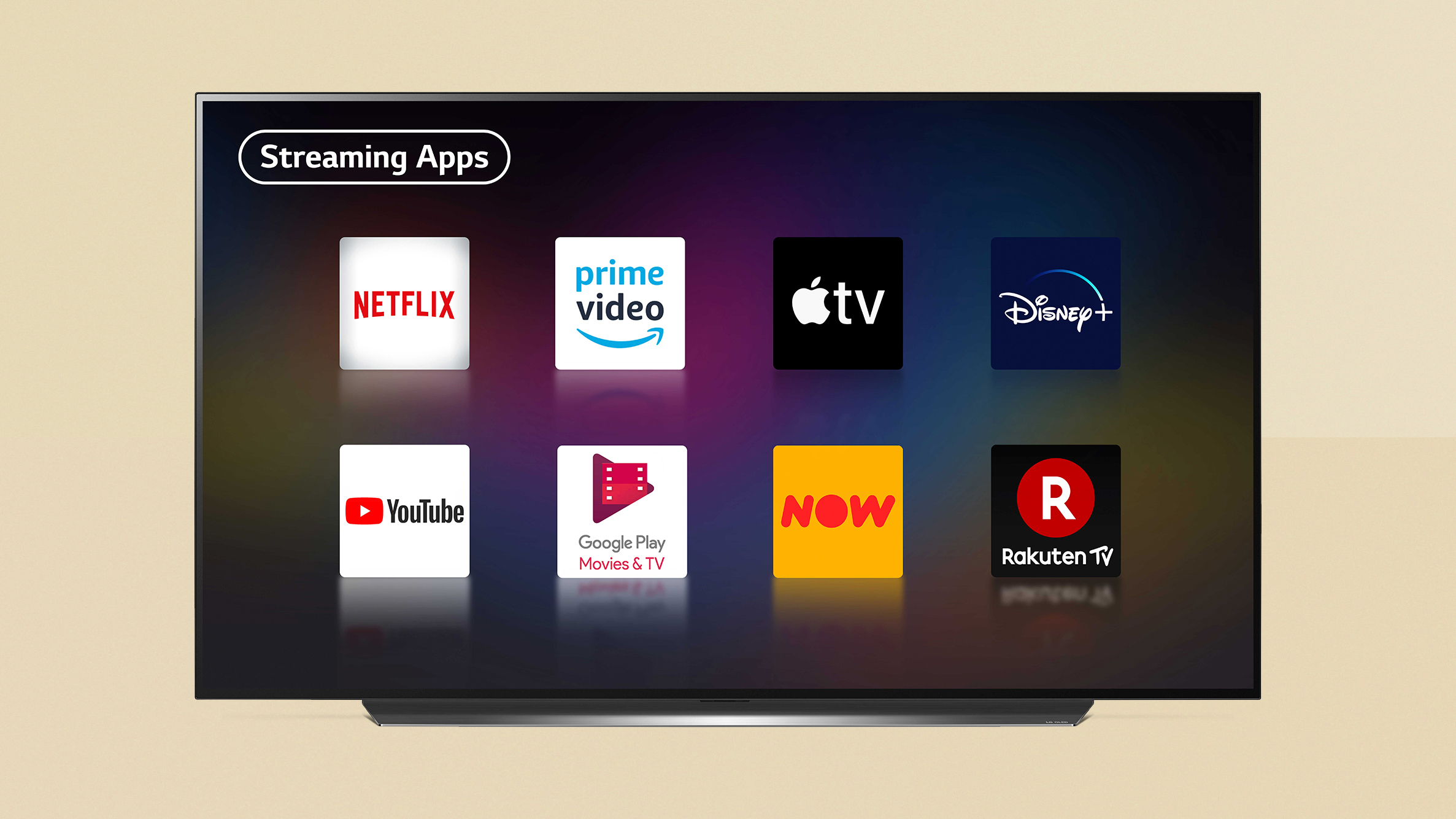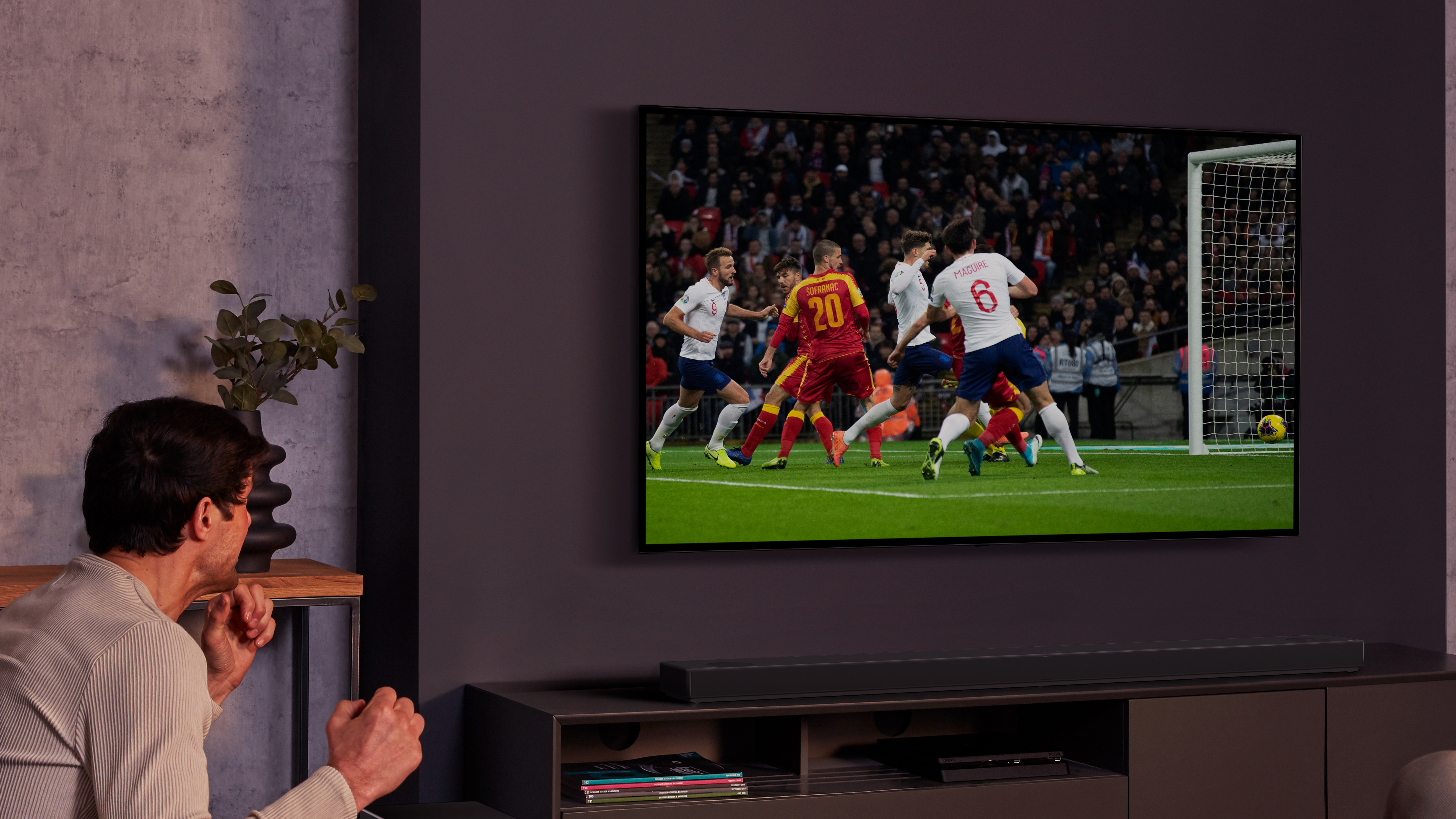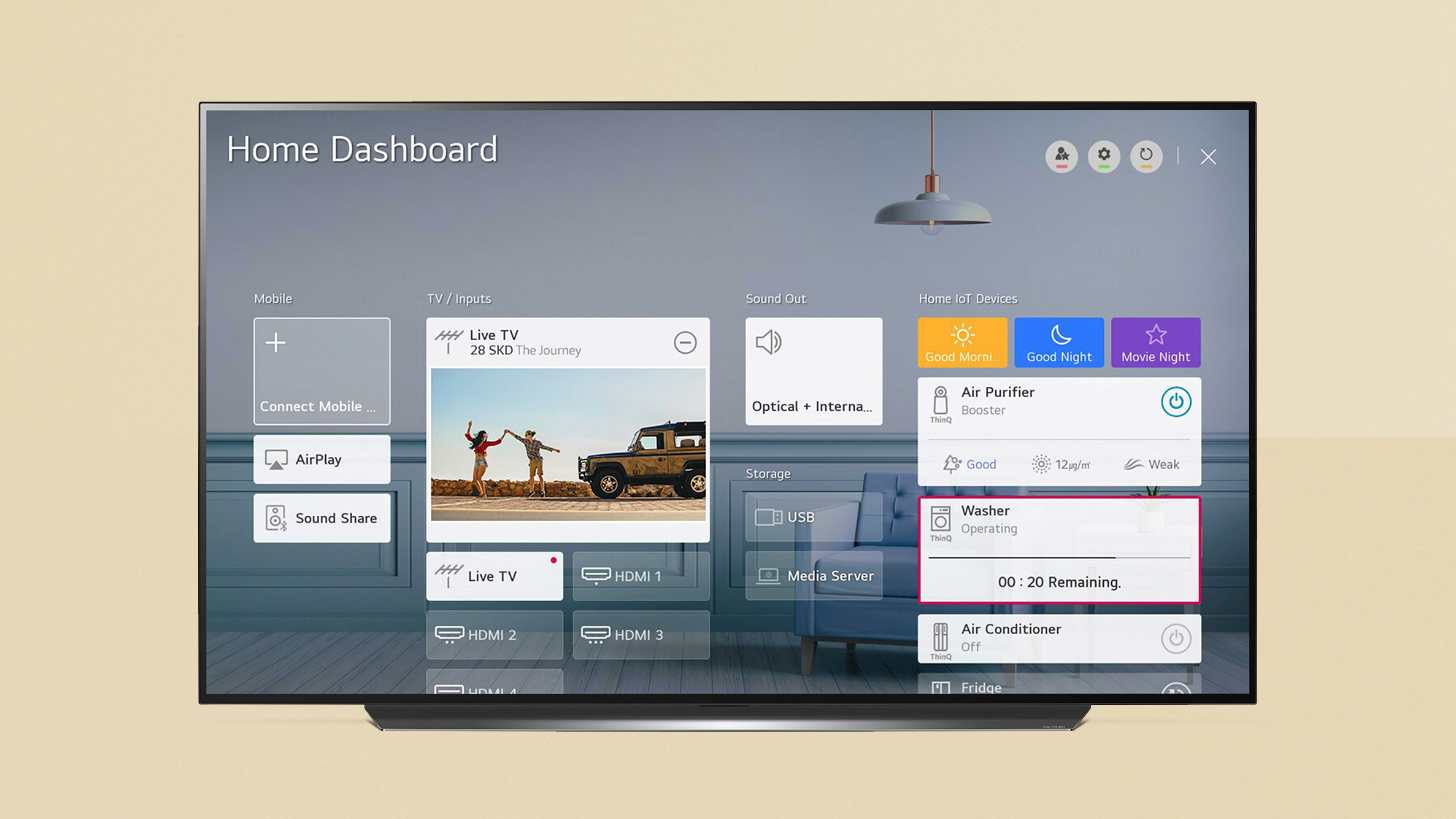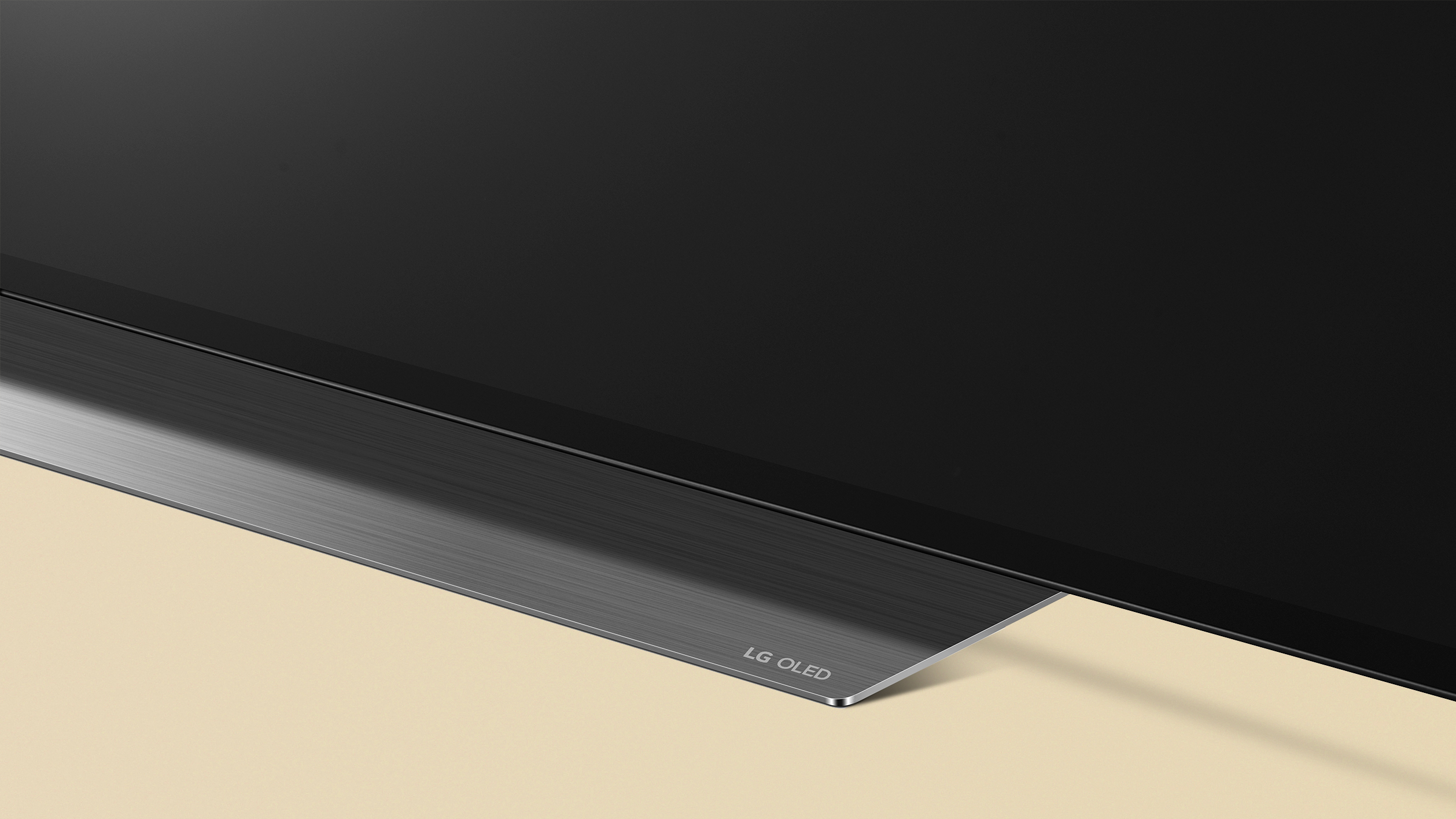LG CX (OLED65CX) review: the best OLED 4K TV for most people, even in 2021
LG CX 4K OLED TV delivers fantastic image quality and is packed with PS5-friendly gaming features – and price cuts make it a great buy still in 2021



The LG CX’s combination of beautiful pictures and a lower price make it LG’s most all-round irresistible OLED TV yet, although its problems handling the bass parts of big movie soundtracks may force you to add a soundbar.
-
+
Gorgeous picture quality
-
+
Breath-taking design
-
+
Affordable by OLED standards
-
-
Really struggles with bass
-
-
No HDR10+ support
-
-
Still some potential for image retention
Why you can trust T3

Welcome to our LG CX review – this TV was one of the highlights of 2020, and remains an excellent buy even now in 2021, thanks to some dramatic price cuts. The new lower price means that even though its replacement – the LG C1 – is now available, the LG CX's current mix of features image quality is very, very hard to resist.
Only the LG BX is cheaper in LG's OLED range, and the CX offers a noticeable step up in image quality, thanks to a more advanced processor and a boost in peak brightness.
The self-emissive nature of LG’s OLED screens revolutionised flat TV picture performance when they first appeared. And even now, despite LCD TVs coming on leaps and bounds in recent years, the excitement among AV fans for every new generation of LG OLED TV is palpable – that's no surprise when you see how many OLED sets appear in our list of the best TVs you can buy.
• OLED vs QLED explained: how the two technologies compare
The LG CX found its wings and soared towards the top of our guide to the best OLED TVs, and retains a high place even now. It also led our guide to the best best gaming TVs until it was deposed by… a newer LG OLED, the LG G1. So let's take a tour of why it's still a five-star TV.
LG CX review: Price & Features
With performance improvements getting smaller each year as OLED matures, LG's plan for dominating the world with the technology is making OLED TVs more affordable. The LG CX now starts from around £1,200/$1,200 for the 48-inch model, and due to the quirks of OLED manufacturing, the 55-inch model is around the same price in the UK, and about $1,400 in the US.
The LG CX’s key features are dominated by its OLED technology. For while we discuss LCD TVs in terms of whether they’re lit from the edge or behind, and how many zones of local dimming they have and so on, the big attraction of OLED is that every one of its pixels makes its own light, completely independently of its neighbours.
This inevitably delivers a local contrast advantage over LCD TV technology, because external backlights have to share their light across many pixels, whereas the image control here is accurate to a single pixel.
In terms of features more specific to LG’s latest OLED TV, the main ones are a new third generation version of LG’s Alpha 9 processor (with improvements focused on skin tone, source optimisation and audio processing), and the addition of new Dolby Vision IQ and Filmmaker Mode picture options.
Dolby Vision IQ combines Dolby Vision’s scene by scene HDR picture information with ambient light room detection to automatically adjust the picture as light levels in your room change. It does this more intelligently (accounting for multiple image elements) than the light compensation features TVs have carried for years.
Filmmaker Mode seeks to recreate on your home TV the sort of neutral settings situation that content is created in at mastering studios. This means, essentially, that it turns off most of the CX’s processing (apart from Dynamic Tone Mapping), and seeks to match as closely as possible content colour values, light levels and frame rates content.
All LG’s 2020 OLED TVs provide extensive options for professional calibrators to use, as well as plenty of more straightforward picture flexibility for more regular user adjustment. These include, most notably, a three-level Peak Brightness adjustment, which lets you choose between boosting the intensity of HDR highlights, or having slightly deeper black levels and more ‘accuracy’.
The CX supports the HDR10, Dolby Vision and HLG HDR formats. There’s no support for the HDR10+ format, which is a shame considering that rival OLED TVs from Panasonic and Philips can play both Dolby Vision and HDR10+. Though it’s worth noting that Dolby Vision content is much more widespread than HDR10+ content.
The LG CX’s smart features are, inevitably, built around LG’s webOS platform. This continues to cover the latest ‘hot properties’ of Disney+ and Apple TV+, alongside more established streaming platforms such as Google Play, Netflix, Rakuten, YouTube, Amazon Prime Video, Britbox, and more. Where any of these apps support Dolby Vision and/or Dolby Atmos sound, the LG CX will always be able to handle both these formats.

Unexpectedly, though, there are no catch up TV apps for the main UK broadcasters (BBC iPlayer, ITV Hub and so on). LG and Freeview Play (an app which brings all the various UK catch up services ‘under one roof) didn't manage to come to an agreement for LG’s 2020 models, though the LG C1 brings this back.
The Apple support extends to AirPlay 2 and HomeKit, and there are a few new WebOS features to report, too.
First, there’s now a ‘recommended content’ section that collates films and shows the TV thinks you might want to watch from across some of the service providers webOS supports. This doesn’t work with all of the available video streaming apps, sadly, but it’s still worth checking in on if you’re struggling to find something to watch.
A Sports Alert feature lets you receive notifications about your favourite sports teams: stuff like results, live match updates and reminders of when live matches are about to be broadcast.
You can now edit which icons show up when you press the Settings button, and an Optimisation Settings menus gives you control over the TV’s ‘pop up’ reminders and advice boxes.
The CX continues LG’s aggressive push to attract gamers. For starters, though its four HDMIs can’t handle the maximum HDMI 2.1 data rate of 48Gbps (unlike 2019’s C9 models, oddly), they can still handle 4K at 120fps with 10-bit colour, which is what the PlayStation 5 and Xbox Series X are promising to support for maximum visual quality.
There’s also support for auto low-latency mode (ALLM) and variable refresh rates (VRR) over HDMI with compatible sources, which again include next-gen consoles. Respectively, these settings keep lag on the TV to a minimum when you're playing, and keeps motion looking smooth even when framerates are changing. On top of that, there's support for the Nvidia G-Sync platform for smoother PC gaming, and LG says it will add support for the AMD Freesync system used by the Xbox One X (and AMD graphics cards) later in the year.
There's also an HDR Gaming Interest Group (HGIG) option, which essentially leaves HDR tone mapping in the hands of a compatible gaming source, so that the TV doesn’t apply its own tone mapping to images that have already been tone mapped at source.

LG CX review: Picture performance
The LG CX’s picture quality delivers subtle but compelling improvements on anything LG OLEDs have delivered before. Which is really saying something, of course, given how good LG OLED TVs typically are.
Let’s start, as usual with OLED TVs, with the OLED65CX’s superlative contrast performance. LG seems to have worked very hard on the balance between achieving truly inky blacks and retaining shadow detail. So black levels look slightly deeper than they did on the C9, while shadow detailing is significantly more satisfying than it was on last year’s B9 (which actually went deeper with its black levels than the C9 did). Dark scenes thus look much more consistently natural, immersive and consistent.
The stellar black levels remain intact no matter what angle you watch the OLED65CX from, too. OLED’s self-emissive technology causes none of the viewing angle issues almost all LCD TVs suffer with to some extent.
The OLED65CX’s self-emissive screen also means we can dispense with the talk of backlight blooming that’s appeared in recent reviews of the Samsung Q95T and Sony XH9505. Essentially the OLED65CX can put its brightest white pixel right against its deepest black pixel with neither compromising the other.
This means that while the OLED65CX might not be able to get as bright as some LCD TVs, bright objects that appear against dark backgrounds actually look more intense and dynamic since there’s no need to dim the bright element to prevent backlight blooming, and no light ‘creep’ into the surrounding dark areas.
The impact of OLED’s local contrast advantage is even more pronounced and precise on the OLED65CX than it was on previous models. Especially with the Peak Brightness feature set to high.
I should stress at this point that the OLED65CX doesn’t deliver significantly more measurable brightness than last year’s C9s did. Avoiding the overcooked Vivid preset, the Standard mode gives around 750 nit peaks with a white HDR square covering 10% of the screen, and this drops to more like 650 nits for the Cinema Home and Cinema presets respectively. Some LCD TVs can go much brighter than that, which helps them to be more visible in brighter rooms (such as a sunlit living room), and undeniably gives HDR colours a punch.
However, the exceptional, pixel-level control of the brightness range available to it really does make those brightness measurements feel conservative in real-world viewing conditions, because of the astounding relative difference between bright and dark.
The CX’s colour performance improves on that of the C9 from the year before. Vivid hues such as blue skies and green forests look more naturally toned without looking any less intense. Skin tones look more natural in a wider range of movie lighting situations, and completely free of any plastickiness or forced shading.
There’s a little more refinement in the handling of subtle colour blends and shades, helping to give pictures a slightly more three-dimensional feel. And monotone backdrops, such as the grey skies, look more consistently across the full width of the screen. Nor is there any banding in such relatively monotone areas if you use the Smooth Gradation feature.
The LG CX’s native 4K pictures look pin-sharp this year too, and hold onto that sharpness better when there’s a lot of motion to contend with. The Cinema Clear mode is a very good preset option, gently taking the edge off the most jarring judder TVs can suffer with when playing 24p content without creating the over-smooth ‘soap opera’ effect, or, usually, throwing up many unwanted digital side effects.
That said, even this mode can occasionally break down with particularly complex content containing a mix of panning cameras and moving objects. So people sensitive to motion processing problems will still probably prefer to either turn TruMotion off or choose a User setting with judder and blur reduction set to fairly low levels.

LG’s latest AI Picture Pro system is a handy improvement on the 2019 version, too. It now enhances the crispness and detail of pictures more subtly and intelligently, with little sign of the exaggerated noise last year’s implementation could cause. HD sources are upscaled slightly better by the CX too. They’re not quite as forensically sharp looking as the upscaled pictures seen on some rival 4K TVs, but their handling of noise and retention of colour nuance and tone is excellent.
It’s hard to find fault with the CX’s pictures, in truth. But, as usual, I guess the chief negative to reiterate is that it can’t go as bright with HDR as the best LCD TVs. Though this only really becomes apparent with predominantly bright shots, . When it comes to dark shots and even mid-dark shots, the CX can actually look punchier than LCD screens.
While the screen is good at preventing ambient light affecting its colour and contrast, it is very prone to reflecting bright objects in your room. This and the relatively limited peak brightness levels may be issues for people with bright living rooms to consider.
The Dolby Vision IQ and AI Brightness Control features do a pretty effective job of compensating for ambient light, but they can't push the brightness past it limits – ultimately a significantly brighter LCD screen (such as the Samsung Q95T or Q950TS) will break though the sun's effect better. But how much do you really watch in the sunlight?
With one or two extremely dark shots, the set’s normally impeccable black levels can suddenly become imbued with a very slight yellow-grey undertone. Such shots can also appear slightly noisier than other types of picture do – though this is often barely noticeable, and much less of an issue than it was on the C9.
One or two tones – especially reds – can look a touch flat and orangey in dark scenes too, and there’s a tendency for compression noise in streamed sources to look slightly exaggerated. Though once again, this is actually significantly less of an issue now than it was with the C9 models. And LG has achieved this improvement on the CX without compromising shadow detail in the way LG’s initial attempts to fix the problem did. And we are very much picking nits here.
I need to mention the potential of OLED TVs to suffer with permanent image retention if exposed to bright, static image elements over protracted periods of time. My sense is this is becoming less of an issue with every OLED generation, but cautions on how to avoid it are still in OLED TV instruction manuals, and anti burn-in features still appear in OLED TV menus.
Unless you leave the TV turned to the same news channel (or similar, with unmoving on-screen graphics) for hours upon hours, or play the same game with some unchanging graphical elements all day, I doubt you'd ever have a problem with this in real life.
Speaking of gaming, in the CX’s Game mode, the TV only suffers with just over 13ms of input lag. This is a superb result – especially as the Game mode doesn’t cause as many obvious compromises to the picture as some LCD game modes do.
It's very nearly the best we've seen, though the Samsung Q80T has it just beaten in its purest Game mode (but not in its default mode, which again maintains more image quality).

LG CX review: Sound quality
The OLED65CX's audio is a mixed bag. In the plus column, if you use its AI Sound Pro mode it can deliver a huge wall of sound that projects far beyond the TV’s edges. This sound projection is well controlled, too, in the sense that audio effects are believably placed, and nothing becomes either too pronounced or lost in the sound expansion process.
As with the past couple of generations of LG TVs, the AI Sound setting delivers much more satisfying – loud, direct and impactful – sound than the default Dolby Atmos mode. And the new voice-specific feature of the sound processor does a great job of keeping vocals both easy to hear and locked to the screen, despite the scale of the rest of the soundstage.
The big problem with the OLED65CX’s sound is that heavy bass can cause its speakers to crackle and drop out quite severely. Especially if you’re running the volume at the sort of level that a quality TV demands.
The bass frequencies that cause the problem are, to be fair, pretty extreme. You won’t come across the issue while you’re watching EastEnders. But it cropped up very noticeably from time to time with most films I watched that contain action scenes or heavy scores.
It's not much of a surprise that audio would be the weakness – it's an area that LG tends to cut back on to make the set affordable, since the picture quality is so good. You'll want to pick up one of the best soundbars to complete the experience, though.

LG CX review: Design & usability
The CX range is seriously gorgeous. The TVs are just millimetres thick for the majority of their screen area (and the bigger the TV is, the thinner it looks relative to its size), and boasts a gorgeous metallic back ‘plate’.
The need to include connections, processors and speakers does mean a chunkier section has to appear over the bottom third or so of the backplate. But this only detracts a little from the set’s futuristic charms.
Even though it hasn’t changed radically for many generations now, LG’s webOS operating system remains easy on the eye and easy to use. It’s extremely customisable too, and does a good job of giving you lots of content options despite being very economical with the onscreen space it takes up.
Its simple horizontal scrolling bar of apps is starting to get a bit unwieldy now there are so many content sources, but you seldom if ever become lost in webOS without knowing where to go next.
The CX is also impressively well-equipped for voice control, with support for LG’s own ThinQ system, Amazon Alexa and Google Assistant all built in, with no need for external listening devices.
LG’s Magic Remote, meanwhile mostly impresses with the unusual way it lets you point at the screen to select options you want and scroll up and down menu lists via a vertical ‘wheel’. Though I did find the wheel a bit stiff on my review sample, sometimes causing me to accidentally press it (for select) when I only wanted to spin it.

LG CX review: Verdict
The various picture quality refinements LG has introduced in the CX range may not be huge by themselves, but put together they add up to a picture that makes more consistent and dramatic use of OLED’s strengths than previous models. And the results really are glorious.
The increasing amounts of picture flexibility LG is providing to those who want to tinker is much appreciated too.
It’s a pity the built-in sound falls can’t handle deep bass more effectively, but by the time you add its stunning design and aggressive new price to its beautiful pictures, the CX really is something special.
Only newer and more expensive TVs can beat its delicate and realistic images in movies, and it also manages to be a dream for those looking at the PlayStation 5 or Xbox Series X thanks to its support for every fancy new feature they have going.
LG CX review: also consider
In terms of potential competition, the big elephant in the room is the LG BX, which matches the CX for features in almost every way, but costs hundreds less. As mentioned before, image quality is definitely weaker, but the difference isn't night and day, and we certainly wouldn't blame anyone for choosing the BX and spending the rest on one of the best soundbars.
The closest LCD TV at this price is the Samsung Q90T, which is also a 2020 TV. It's equivalently well-equipped for next-gen gaming to the CX, and is majorly brighter for HDR content, but can't offer the same precise contrast as OLED.
If you want the gaming features for cheaper, look to the Sony XH95/X950H. The punchiness of its HDR is just wonderful, and it has 4K 120HZ support on board (though VRR is planned for an update). But it's majorly, majorly cheaper than the LG CX.
And, of course, there's the LG C1. The CX's replacement uses processing improvements to make HDR colours even more realistic, and there are subtle upgrades across the board. It also has a great new Game Optimizer mode for gaming, letting you customise how it balances lag with image quality.
Sign up to the T3 newsletter for smarter living straight to your inbox
Get all the latest news, reviews, deals and buying guides on gorgeous tech, home and active products from the T3 experts
John Archer has been testing TVs and AV gear for over 25 years, having worked on Home Cinema Choice magazine. He's a contributor to Forbes, TechRadar, Trusted Reviews, Wired and many more places – if you've owned a TV in the last couple of decades, John's probably reviewed it somewhere. He's seen so many hot new technologies come and go, like tears in the rain.
-
 Polar’s new subscription feature lands in the shadow of Garmin’s Connect+ rollout
Polar’s new subscription feature lands in the shadow of Garmin’s Connect+ rolloutPR genius or timing disaster? Polar’s new Fitness Programme adds adaptive training to its ecosystem
By Matt Kollat Published
-
 New Orient Star watches offer a glimpse of the magic within
New Orient Star watches offer a glimpse of the magic withinThere are two new skeleton pieces
By Sam Cross Published
-
 Netflix's most surprising 100%-rated sci-fi series returns with gorgeous trailer
Netflix's most surprising 100%-rated sci-fi series returns with gorgeous trailerLove Death + Robots is back for more
By Max Freeman-Mills Published